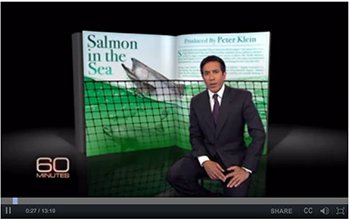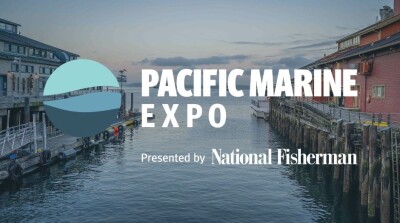Alaska’s salmon season officially opened at 7 a.m. today with wet nets in the Copper River region.
For many Alaskans, salmon is the mother species. This one fish provides for the livelihoods of tens of thousands of people who work the salmon season on tenders, in canneries, and as captains and crew. Appropriately enough, the news magazine show “60 Minutes” aired a piece on the threats of farmed salmon to wild salmon populations on Mother’s Day, Sunday, May 11.
 It opens with correspondent Dr. Sanjay Gupta traveling to a salmon farm north of Vancouver, British Columbia, with Marine Harvest’s Ian Roberts. Roberts deflects the question of whether open-ocean salmon farms are damaging their natural environment by claiming salmon farming is nearly altruistic in nature because it reduces pressure on wild stocks.
It opens with correspondent Dr. Sanjay Gupta traveling to a salmon farm north of Vancouver, British Columbia, with Marine Harvest’s Ian Roberts. Roberts deflects the question of whether open-ocean salmon farms are damaging their natural environment by claiming salmon farming is nearly altruistic in nature because it reduces pressure on wild stocks.
The problem with this argument is it simply doesn’t hold water. Fish farms do nothing to relieve pressure on wild salmon stocks so long as the wild stocks are well-managed. When we manage our fisheries for sustainability rather than to meet market demand, then the amount of fish on the market is fixed year by year based on — in the case of salmon — escapement goals. It is not based on the demand for fish as a protein.
If anything, one could argue that salmon farms merely hide behind the problem while actually making it worse. What of the pressure fish farms put on the wild fish they use for feed? Are those species as well managed as wild American salmon? Certainly the business of fish farming — as a private industry rather than a public resource — is more dependent on the ups and downs of the market. So how does their need for fish-based feed affect wild populations of fish globally?
Is that a moot question simply because farming is perceived as the way of the future?
“We farm everything we eat,” Roberts says on the show. “All our vegetables are farmed. All our meats are farmed."
As activist Alexandra Morton points out, these are not farms, they are feedlots. The damage fallow farms leave behind can take many years for nature to correct. And what of the risk of disease and escapement? Morton has found evidence of infectious salmon anemia among wild populations. That disease, she says, existed in Chile’s farmed salmon industry for 10 years before it exploded and did colossal damage to the populations of farmed fish. But there was no wild population at risk in Chile like there is here and in Canada.
While the rest of the food movement is urging safer practices for food sources and farming — away from feedlots and industrial agriculture — the fishing industry is being persistently edged out of the public’s right to access the last vestiges of truly wild protein.
“The ocean is the last place where we hunted and gathered,” says Roberts. Note his use of the past tense.
Shouldn’t the solution be to take a closer look at the way we eat what we eat and go from there, rather than assuming we will continue to consume in the same way and simply must manufacture the food differently?
“The problem is there is 7 billion of us now on this planet,” says Roberts. “And the oceans can't give us any more fish. We owe it to our oceans to make sure that we're providing an alternate to just capturing the last wild fish.”
Indeed. We also owe it to ourselves to make sure we’re not poisoning the last wild fish.







